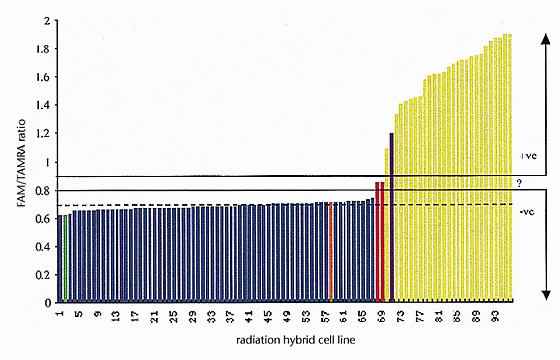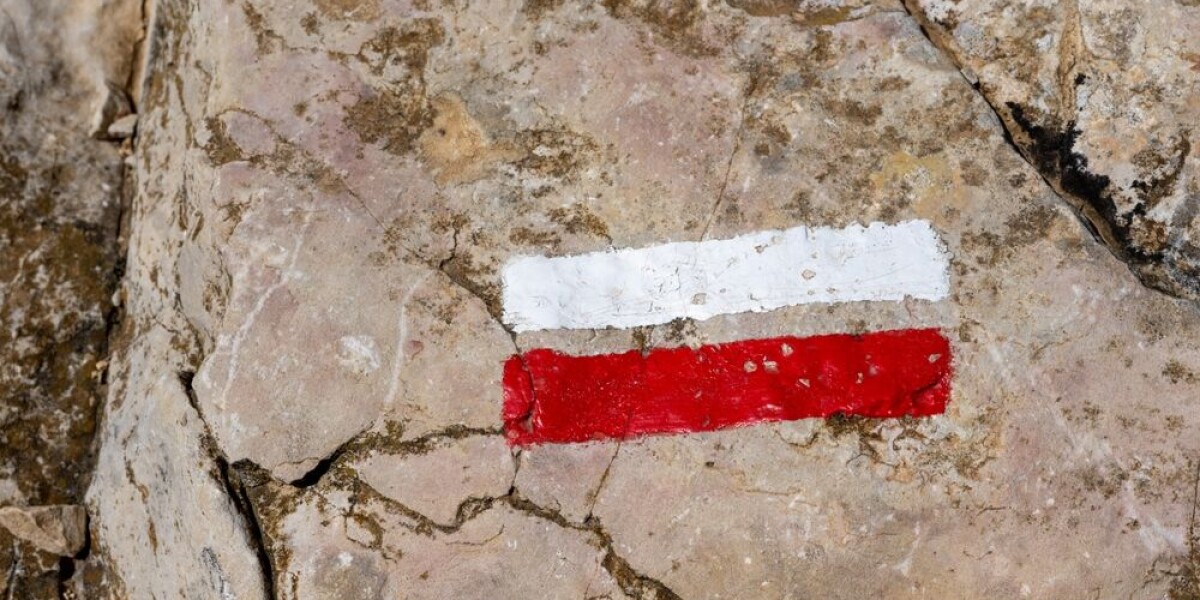
- Select a language for the TTS:
- UK English Female
- UK English Male
- US English Female
- US English Male
- Australian Female
- Australian Male
- Language selected: (auto detect) - EN
Play all audios:
ABSTRACT Radiation hybrid (RH) maps are a useful tool for genome analysis, providing a direct method for localizing genes and anchoring physical maps and genomic sequence along chromosomes.
The construction of a comprehensive RH map for the human genome1 has resulted in gene maps reflecting the location of more than 30,000 human genes2,3. Here we report the first comprehensive
RH map of the mouse genome. The map contains 2,486 loci screened against an RH panel of 93 cell lines4. Most loci (93%) are simple sequence length polymorphisms (SSLPs) taken from the mouse
genetic map, thereby providing direct integration between these two key maps. We performed RH mapping by a new and efficient approach in which we replaced traditional gel- or
hybridization-based assays by a homogeneous 5´-nuclease assay5 involving a single common probe for all genetic markers. The map provides essentially complete connectivity and coverage across
the genome, and good resolution for ordering loci, with 1 centiRay (cR) corresponding to an average of approximately 100 kb. The RH map, together with an accompanying World-Wide Web server,
makes it possible for any investigator to rapidly localize sequences in the mouse genome. Together with the previously constructed genetic map6 and a YAC-based physical map reported in a
companion paper7, the fundamental maps required for mouse genomics are now available. Access through your institution Buy or subscribe This is a preview of subscription content, access via
your institution ACCESS OPTIONS Access through your institution Subscribe to this journal Receive 12 print issues and online access $209.00 per year only $17.42 per issue Learn more Buy this
article * Purchase on SpringerLink * Instant access to full article PDF Buy now Prices may be subject to local taxes which are calculated during checkout ADDITIONAL ACCESS OPTIONS: * Log in
* Learn about institutional subscriptions * Read our FAQs * Contact customer support SIMILAR CONTENT BEING VIEWED BY OTHERS GPSEQ REVEALS THE RADIAL ORGANIZATION OF CHROMATIN IN THE CELL
NUCLEUS Article 25 May 2020 ASSEMBLY OF 43 HUMAN Y CHROMOSOMES REVEALS EXTENSIVE COMPLEXITY AND VARIATION Article 23 August 2023 TOWARDS A REFERENCE GENOME THAT CAPTURES GLOBAL GENETIC
DIVERSITY Article Open access 30 October 2020 REFERENCES * Hudson, T.J. et al. An STS-based map of the human genome. _Science_ 270, 1945–1954 (1995). Article CAS Google Scholar * Schuler,
G.D. et al. A gene map of the human genome. _Science_ 274, 540–546 (1996). Article CAS Google Scholar * Deloukas, P.A. et al. A physical map of 30,000 human genes. _Science_ 282, 744–746
(1998). Article CAS Google Scholar * McCarthy, L.C. et al. A first-generation whole-genome radiation hybrid map spanning the mouse genome. _Genome Res._ 7, 1153–1161 (1997). Article CAS
Google Scholar * Livak, K.J., Marmaro, J. & Todd, J.A. Towards fully automated genome-wide polymorphism screening. _Nature Genet._ 9, 341–342 (1995). Article CAS Google Scholar *
Dietrich, W.F. et al. A comprehensive genetic map of the mouse genome. _Nature_ 380, 149–152 (1996). Article CAS Google Scholar * Nusbaum, C. et al. A YAC-based physical map of the mouse
genome. _Nature Genet_. 22, 388–393 (1999). Article CAS Google Scholar * Rhodes, M. et al. A high-resolution microsatellite map of the mouse genome. _Genome Res._ 8, 531–542 (1998).
Article CAS Google Scholar * Slonim, D., Kruglyak, L., Stein, L. & Lander, E.S. Building human genome maps with radiation hybrids. _J. Comput. Biol. _ 4, 487–504 (1997). Article CAS
Google Scholar * Marra, M. et al. An encyclopedia of mouse genes. _Nature Genet. _ 21, 191–194 (1999). Article CAS Google Scholar Download references ACKNOWLEDGEMENTS We thank G.
Farino and V. Frazzoni for technical assistance. T.J.H. is a recipient of a Clinician-Scientist award from the Medical Research Council of Canada. This research was supported by the National
Institutes of Health (HG01806). AUTHOR INFORMATION AUTHORS AND AFFILIATIONS * Whitehead Institute/MIT Center for Genome Research, Whitehead Institute for Biomedical Research, Cambridge,
02142, Massachusetts, USA William J. Van Etten, Robert G. Steen, Huy Nguyen, Andrew B. Castle, Donna K. Slonim, Chad Nusbaum, Eric S. Lander & Thomas J. Hudson * Montreal General
Hospital Research Institute, McGill University, Montreal, H3G 1A4, Canada Bing Ge & Thomas J. Hudson * National Center for Biotechnology Information, National Library of Medicine,
National Institutes of Health, Bethesda, 20894, Maryland, USA Greg D. Schuler * Department of Biology, Massachusetts Institute of Technology, Cambridge, 02139, Massachusetts, USA Eric S.
Lander Authors * William J. Van Etten View author publications You can also search for this author inPubMed Google Scholar * Robert G. Steen View author publications You can also search for
this author inPubMed Google Scholar * Huy Nguyen View author publications You can also search for this author inPubMed Google Scholar * Andrew B. Castle View author publications You can also
search for this author inPubMed Google Scholar * Donna K. Slonim View author publications You can also search for this author inPubMed Google Scholar * Bing Ge View author publications You
can also search for this author inPubMed Google Scholar * Chad Nusbaum View author publications You can also search for this author inPubMed Google Scholar * Greg D. Schuler View author
publications You can also search for this author inPubMed Google Scholar * Eric S. Lander View author publications You can also search for this author inPubMed Google Scholar * Thomas J.
Hudson View author publications You can also search for this author inPubMed Google Scholar CORRESPONDING AUTHORS Correspondence to Eric S. Lander or Thomas J. Hudson. RIGHTS AND PERMISSIONS
Reprints and permissions ABOUT THIS ARTICLE CITE THIS ARTICLE Van Etten, W., Steen, R., Nguyen, H. _et al._ Radiation hybrid map of the mouse genome. _Nat Genet_ 22, 384–387 (1999).
https://doi.org/10.1038/11962 Download citation * Received: 16 April 1999 * Accepted: 28 June 1999 * Issue Date: August 1999 * DOI: https://doi.org/10.1038/11962 SHARE THIS ARTICLE Anyone
you share the following link with will be able to read this content: Get shareable link Sorry, a shareable link is not currently available for this article. Copy to clipboard Provided by the
Springer Nature SharedIt content-sharing initiative





